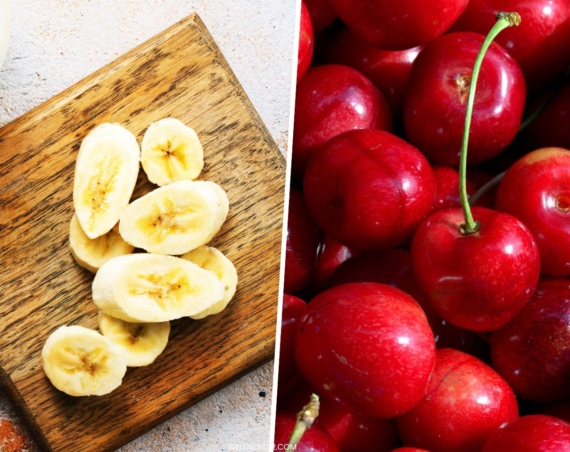
Vegetarian keto diet – Can vegetarians do keto?
Keto diets have gotten a lot of attention in the past several years. Compared to other low-carb diets, the keto diet focuses primarily on attaining ketosis.
The health benefits it touts are extensive and well-researched. Likewise, plant-based diets are excellent health-wise, and good for the planet too.
But, can these two diets co-exist?
Vegetarian + Keto
The vegetarian keto diet is a plant-based diet that follows the keto macro ratio.
Many vegetarians are actually “octo-lavo vegetarians.” Meaning, they do eat some animal products like eggs and dairy but abstain from meat and fish.
Keto diets call for following a high-fat and moderate-protein approach. Specifically, aiming for a daily intake of 20% protein, 70% fat—leaving only 20% for carbs.
So, in this respect, it can be a successful diet for vegetarians to follow.
When participants stay within 20-50 grams of carbs per day, they will achieve ketosis.
Ketosis is the key for fat-burning, and why so many people enjoy weight loss as a direct effect of keto. And that is certainly possible for vegetarians, too.
Why a Vegetarian Keto Diet Is Good for You
Both vegetarian and keto diets enable weight loss. This can be especially helpful for those with a large amount of weight to lose. Many studies show that these diets promote greater weight loss than calorie restriction.
One of the benefits of a high-fat diet is that hunger is not a problem. The reduction of cravings enables people to stick with it longer. And as a result, they lose more weight.
Both diets reduce the risk of certain diseases, too. These include diabetes, memory disorders like Alzheimer’s, and cardiac disease. Lower risks for cancer have been reported, too!
Specifically, these diets help insulin resistance. Better control over blood sugar and its fluctuations help to ward off diabetes.
What Is Lacking?
Both of these diets restrict certain food groups. For that reason, nutritional deficiencies can become a problem. These include lowered consumption of B12, protein, calcium, and iron.
When combining these diets, consuming enough fruits and veggies can be problematic. Taking supplements and vitamins can mitigate some of these effects.
For some, moving away from their normal way of eating to a keto/vegetarian diet can be a rough transition. As your body approaches ketosis, flu-like symptoms can come on.
These include headaches, digestion upset, insomnia, nausea, muscle cramps, and dizziness. The good news is that these side effects are temporary.
Once the body adjusts, a surge in energy and renewed mental focus is often reported!
Pregnant (or breastfeeding) women should consult their physician before trying this diet combo. That goes for children, high-level athletes, and type 1 diabetic, too. Athletes doing high-level training need to exercise caution while in ketosis.
What You Can Eat
In general, you’ll need to avoid starchy veggies. You’ll want to consume as much healthy fat as you can and go for plant protein sources.
As you become familiar with this diet, it will come more naturally. But in the beginning, it’s helpful to keep a list of approved foods handy:
- Vegetables: broccoli, spinach, kale, cauliflower, mushroom, zucchini, and bell peppers
- Dairy: full-fat yogurt, milk, and cheese
- Fats: avocado, olive and coconut oil, avocados, and MCT oil
- Protein: tofu, eggs, tempeh, nutritional yeast, natto, and spirulina
- Nut butter: hazelnut, peanut, almond, and pecan butter
- Seeds: Pumpkin seeds, hemp, chia, and flax
- Nuts: walnuts, almonds, cashews, pistachios, macadamia and Brazil nuts
- Fruit (in moderation): berries, citrus (limes/lemons)
- Herbs and seasonings: pepper and salt, paprika, basil, turmeric, oregano, thyme, and rosemary
What You Cannot Eat
Going vegetarian means avoiding all seafood, poultry, and meat. You can eat a small amount of plant protein, as described above. Any high-carb foods need to be avoided or eaten in very small quantities.
Keep this list of foods to avoid handy while you become familiar with the diet:
- Starchy veggies: yams, potatoes, beets, carrots, parsnips, and sweet potatoes
- Beverages: sugar-sweetened drinks like soda, sport, and energy drinks, sweet tea, and juice
- Legumes: peas, beans, chickpeas, and lentils
- Grains: bread, pasta, quinoa, rice, millet, oats, barley, rye, and buckwheat,
- Fruit: bananas, apples, oranges, melon, berries, plums, peaches, and apricots
- Processed foods: cereals, chips, cookies, granola, crackers, and baked goods
- Condiments: honey mustard, BBQ sauce, marinades, ketchup, and most salad dressings
- Sweeteners: sugar (brown, white) honey, maple and agave syrup, nectars
- Alcoholic beverages: wine, beer, and most pre-made cocktails
5-Day Sample Vegetarian Keto Menu
If you’ve read this far and want to get started, here’s a 5-day menu sampler to get going with!
Monday
- Breakfast: tofu scrambled mixed veggies and cheese using olive oil
- Lunch: zoodles (zucchini noodles) with tempeh meatballs and avocado sauce
- Dinner: mixed green salad with, avocados, tomatoes, tofu, and bell peppers
Tuesday
- Breakfast: full-fat milk smoothie with spinach, PB, chocolate whey protein, and MCT oil
- Lunch: cauliflower-crust pizza with mushrooms, cheese, tomatoes, spinach, and olive oil
- Dinner: frittata made with spinach, tomatoes, asparagus, feta, and coconut oil
Wednesday
- Breakfast: coconut oil omelet made with garlic, cheese, onions, and tomatoes
- Lunch: faux mac ‘n’ cheese made with cauliflower, tempeh bacon, avocado oil, and broccoli
- Dinner: coconut curry with mixed veggies and tofu, made with olive oil
Thursday
- Breakfast: keto oatmeal made with hemp and flax seeds, heavy cream, PB, and cinnamon
- Lunch: taco lettuce wraps made with walnut-mushroom “meat,” avocados, tomatoes, cilantro, sour cream, and cheese
- Dinner: fried rice made with cauliflower, coconut oil, veggies, and tofu
Friday
- Breakfast: Greek yogurt with chia seeds and walnuts
- Lunch: a baked egg-avocado boat with coconut bacon, chives, and paprika
- Dinner: zucchini pizza boats using marinara, spinach, cheese, garlic, and olive oil
Vegetarian Keto-Approved Snacks
One of the greatest things about a keto diet is all the snacking you can do! Here are some great veggie/keto snacks that won’t sabotage your diet:
- Mixed nuts
- Zucchini chips
- Pumpkin seeds (roasted or plain)
- Chia seed pudding (try topping it with unsweetened coconut)
- Sliced cheese on flax crackers
- Guacamole (carrots to dip)
- Cottage cheese (full-fat with black pepper)
- Celery with peanut butter
- Greek yogurt (full-fat with almonds or walnuts)
- Blackberries or raspberries with heavy whipped cream
The takeaway
There are tons of benefits to trying a keto diet. Likewise, a vegetarian diet delivers plenty of awesome healthy effects, too. Combine the two with a little diligence and you could be getting the best of both!
The biggest thing to keep an eye on is your nutritional amounts. You’ll need to make sure to get enough vitamins and minerals, for one. Maintaining ketosis by reducing carbs is another key factor.
Regardless, many vegetarians follow a keto diet without issue, and you could be one of them!


